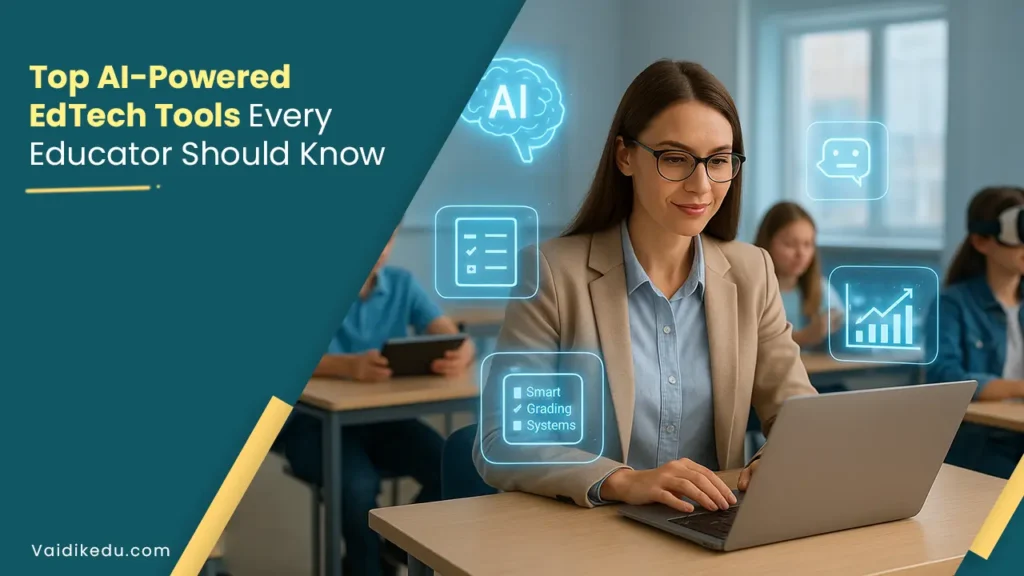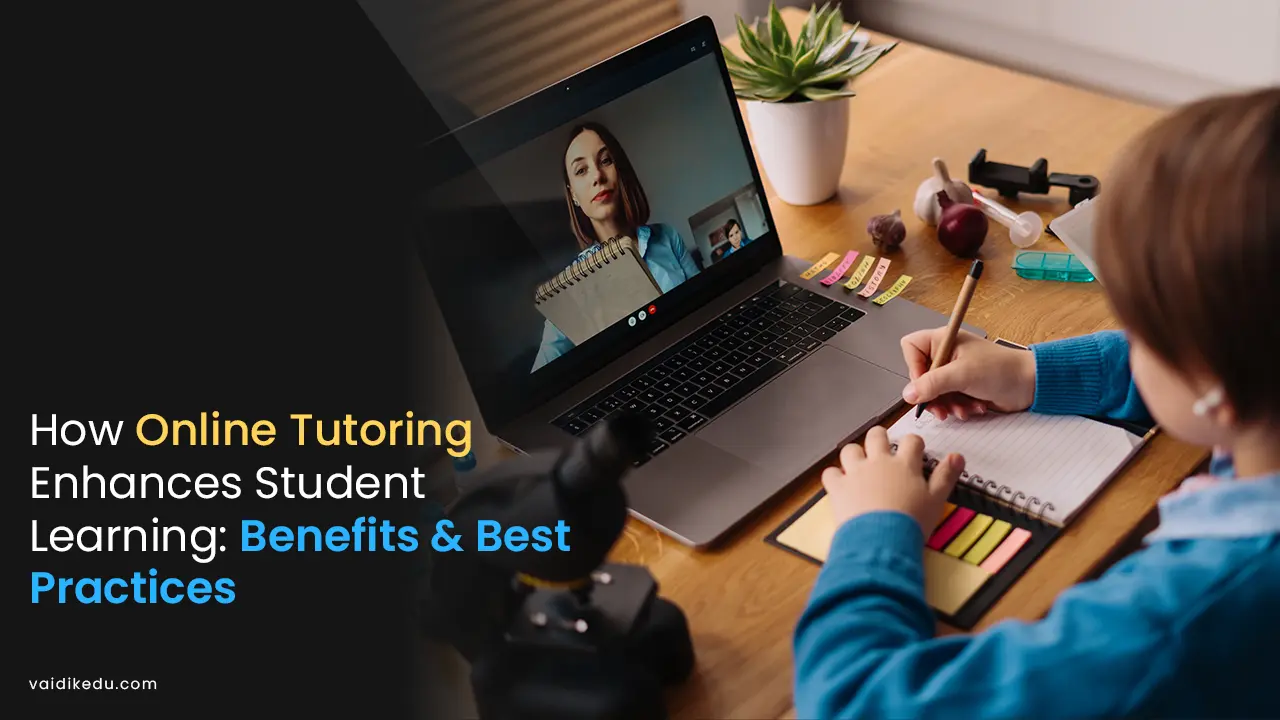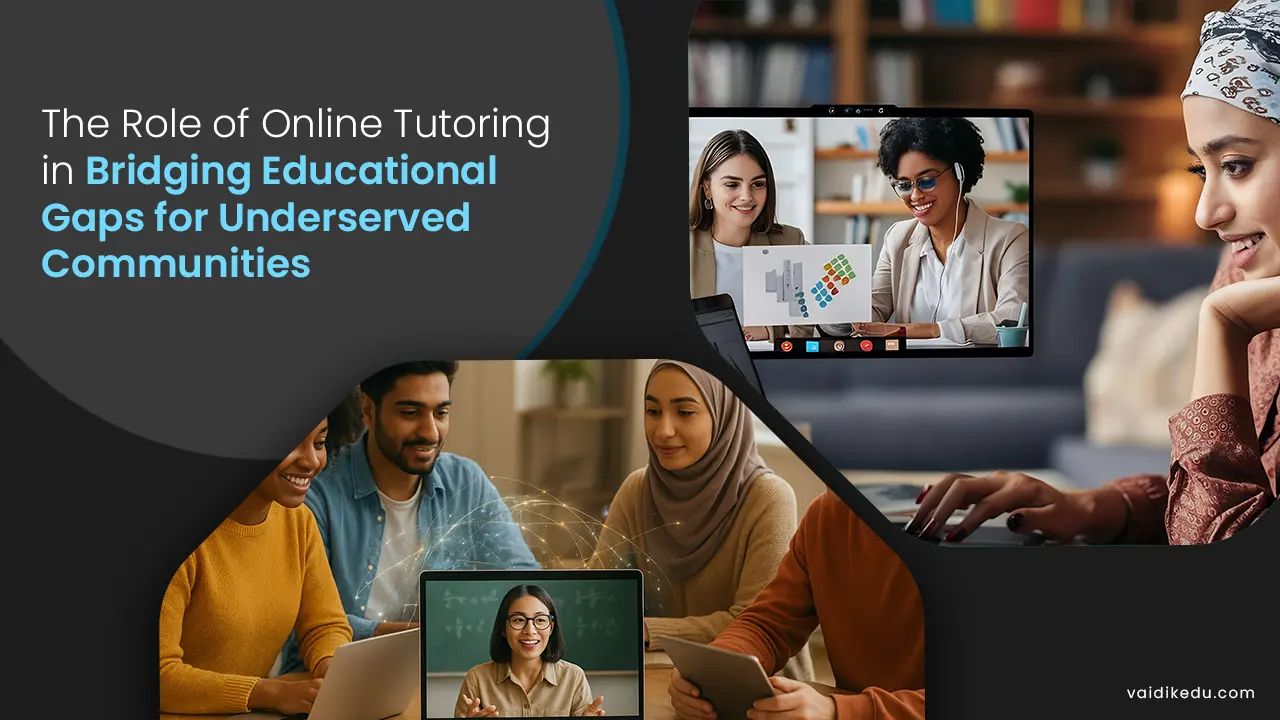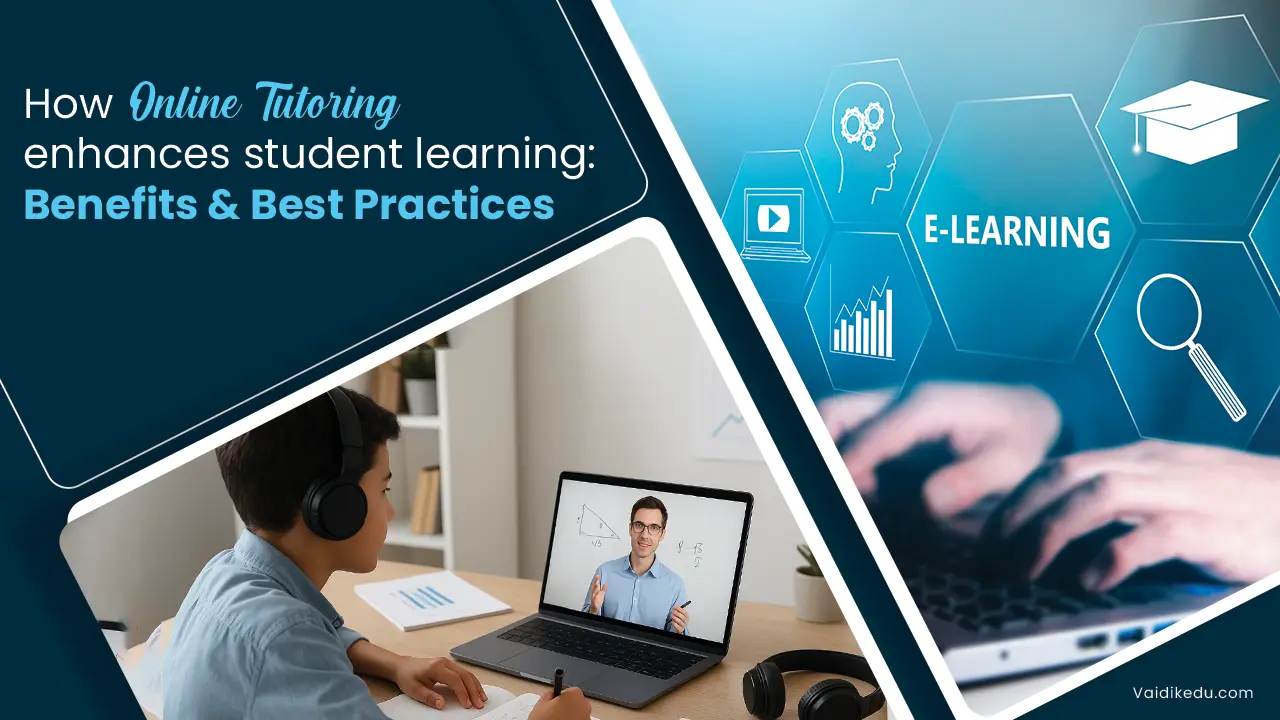The education sector is changing fast. Thanks to technology, learning has become easier and more engaging. Among the many advancements, Artificial Intelligence (AI) stands out. It has brought tools that help educators teach better and make learning more personalized. This essay explores the top AI-powered tools every educator should know.
What Are AI-powered Tools
AI-powered tools are apps or programs that use Artificial Intelligence (AI). They can think and learn like humans. These tools help to do tasks faster and better.
For example:
- Grammarly checks your writing for mistakes.
- Duolingo helps you learn languages easily.
They save time and make work easier for everyone.
Top AI-powered EdTech Tools For Educators:
1. Duolingo:
Duolingo is a language-learning app. It employs AI to personalize lessons for each learner. The software records how a learner learns. It then provides activities to help repair weak areas. Duolingo uses games and rewards to make learning more enjoyable. It’s ideal for teachers who want to help students learn new languages.
2. Grammarly:
Grammarly is a writing improvement tool. It checks spelling, grammar, and punctuation. It also provides better wording options. Grammarly employs AI to comprehend the context of the content. Educators can use it to verify assignments. Students can utilize it to improve their writing abilities. It works as a browser extension and is simple to use.
3. Google Classroom:
Google Classroom is a popular tool for managing classes. It uses AI to organize assignments and provide feedback. Teachers can create and share assignments quickly. Students can submit their work online. Google Classroom also integrates with many other apps. It saves time and keeps classes organized.
4. DreamBox Learning:
DreamBox Learning is an AI-powered math platform. It offers lessons for students of all levels. The tool adapts to each student’s needs. It provides real-time feedback and adjusts lessons. Teachers can use the insights to understand how students are progressing. This helps in creating targeted teaching strategies.
5. Edmodo:
Edmodo is a platform for communication between teachers and students. It uses AI to recommend resources. Teachers can share notes, quizzes, and assignments. Students can ask questions and collaborate. Edmodo also provides insights into student performance. This helps teachers identify areas where students need support.
6. Turnitin:
Turnitin is a tool for checking plagiarism. It compares student work with a vast database. The AI in Turnitin highlights copied content. It also provides suggestions for improving writing. Educators use it to ensure academic honesty. Students can learn how to write original content.
7. Smart Sparrow:
Smart Sparrow is an adaptive learning platform. It enables educators to build personalized lessons. Smart Sparrow’s AI adjusts information based on student replies. This guarantees that each learner has a personalized experience. Teachers can also monitor performance and improve their lessons.
8. NearPod:
Nearpod is a tool for designing interactive classes. It employs artificial intelligence to make lessons more engaging. Teachers might include quizzes, movies, and virtual reality experiences. Students can interact in real-time. Nearpod also offers reports on student performance. This lets teachers assess how well their students are learning.
9. ScribeSense:
ScribeSense automates grading. It uses AI to scan and grade handwritten and typed assignments. This saves time for teachers. The tool also provides detailed feedback. Educators can focus more on teaching while ScribeSense handles grading.
- AI Dungeon:
AI Dungeon is a creative writing tool. It uses AI to generate story ideas. Students can create their own stories and explore their imaginations. Teachers can use it to encourage creative writing. It is fun and helps improve storytelling skills.
11. Google’s Socratic:
Socratic is a homework-solving app driven by artificial intelligence. Students can use the app to take a photo of an issue and receive solutions. It explains subjects via videos and step-by-step directions. It can be used by teachers to help students understand complex concepts.
12. Woe Bot:
Woebot is an AI chatbot designed to help people with mental health issues. It teaches students how to deal with stress and worry. Teachers might suggest it to pupils who need emotional help. Woebot offers useful information and exercises for improving mental health.
13. Prodigy:
Prodigy is a math game platform. It uses AI to adapt questions for each student. The game-based approach makes math fun. Teachers can assign tasks and track progress. This tool is more suitable for younger students who enjoy interactive learning.
14. Jasper AI:
Jasper AI is a tool for content generation. It enables students and teachers to write essays, blogs, and other content. It employs artificial intelligence (AI) to generate ideas, improve content, and accelerate writing.
15. Canva:
Canva employs artificial intelligence to create visually attractive designs. Teachers can use it to create lesson plans, posters, and presentations. It is user-friendly and includes templates for easy design.
16. Content Technologies Inc. (CTI):
CTI creates AI-powered tools for customizing textbooks. It can generate resources based on curriculum requirements. This saves teachers time while developing resources.
17. Cognii:
Cognii provides AI-powered virtual tutors. It assists students with tailored learning. Teachers can use it to provide real-time assessments and feedback.
18. Elsa Speaks:
Elsa Speak employs artificial intelligence to help people improve their English speaking skills. It provides individualized drills for pronunciation and fluency. Teachers might recommend it to pupils studying English.
Why Should Educators Use AI-powered Tools
AI-powered technologies provide numerous benefits. They save time by automating repetitive operations, such as grading. They offer tailored learning paths to students. This ensures that every student receives the support they require. AI tools also provide real-time insights into student performance. This enables teachers to alter their teaching tactics.
Using these technologies improves class engagement. Interactive lessons and activities keep students engaged. They also assist pupils in acquiring critical abilities such as problem-solving and creativity.
Let’s look into a real-life example, showing how AI-powered tools can enhance the experience of learning in day-to-day classroom.
Let’s say, a teacher has 30 students in her class. Grading homework takes a lot of time. She starts using an AI tool like ScribeSense. This tool scans the homework and grades it automatically.
Now, the teacher spends less time grading. She uses this saved time to help students individually. The tool also gives detailed feedback to students. This helps them understand their mistakes and improve.
With AI tools, the teacher can focus more on teaching. Students learn better because they get quicker and more helpful feedback. This shows how AI-powered tools make education easier and more effective.
Conclusion:
AI-powered EdTech technologies are redefining education. They facilitate instruction and improve learning outcomes. Tools like Duolingo, Grammarly, and Prodigy are only the beginning. Educators should look into these tools to improve their teaching. Embracing AI in education can help pupils reach their full potential.
Frequently Asked Questions
Some tools are free, like Khan Academy, while others may require payment for extra features.
AI tracks a student’s progress and adjusts lessons to their needs. It focuses on areas where they need more help.
AI will make learning more accessible and personalized. It will help teachers and students in new and exciting ways.









